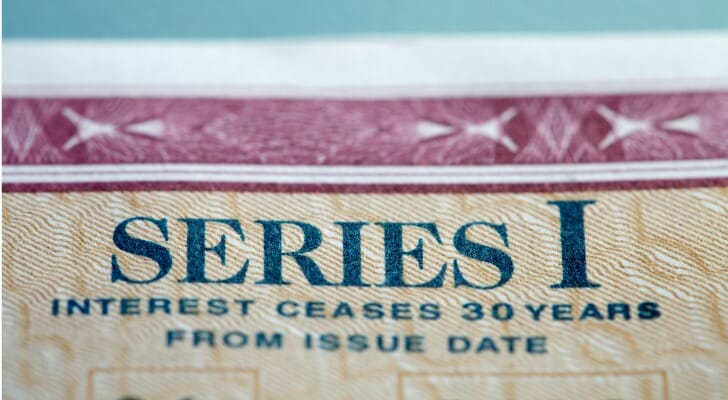The interest rate on Series I savings bonds bonds for the last six months has been an impressive 6.89%. But investors looking to jump into new issue bonds are in for a letdown. According to the Treasury, the rate for I bonds has reset to 4.3%.
The new annualized rate went into effect May 1 and includes a 0.9% fixed rate and a 1.69% six-month inflation rate. If you’re interested in investing in I bonds or other fixed-income instruments, consider working with a financial advisor.
A Silver Lining to the Lower Interest Rate

Sure, I bonds are now paying less than they were in recent months. But, as always, things could be worse. The new rate is higher than previous estimates that were made based on known inflation data, which had pegged the rate below 4%. On the other hand, the rate paid on I bonds from May to November 2022 was a whopping 9.62%.
As of March, the annualized inflation rate was 5%, down from 6% in February and much lower than the March 2022 rate of 8.5%. The Federal Reserve’s Open Market Committee has forecast inflation for 2023 to come in between 2.8% and 4.1%, with a median prediction of 3.3% for the year.
The I bond rate is made up of two components: a fixed rate set by the Treasury as well as an added inflation rate that’s adjusted with each auction. Once set, the fixed rate is good for the life of the bond, while the inflation rate is adjusted in May and November. Interest is compounded twice per year.
Because of the lifetime fixed-rate component, buying and holding I bonds when inflation is high can be a profitable strategy once inflation drops. I bond holders who bought between May and November 2001 maintain a fixed rate of 3%, giving them an annualized rate of 6.43% for the next six months.
The highest rate being paid now on previously issued I bond is 7.04% for bonds purchased between May and November 2000. The lowest return is 3.38% being paid on several issues of bonds made when inflation and interest rates were low, with the fixed rate at 0%.
How to Buy I Bonds

Individual investors can buy up to $10,000 worth of I-bonds each calendar year, as well as an additional $5,000 in paper I-bonds using their tax refund, which they can then convert to their digital account.
I bonds can be purchased only from the TreasuryDirect.gov website. Buyers need to create an account, a process many investors have criticized as complicated and clunky. Besides your personal information, you’ll need to enter your bank account and routing numbers, along with setting up a password and security questions. The bonds are issued electronically, and the minimum purchase amount is $25.
Investors can purchase up to another $5,000 in paper bonds using their federal income tax refunds, or $10,000 for a couple filing jointly. The purchase can be made only when you file your return, using IRS Form 8888, Allocation of Refund.
I bonds can be purchased for children by setting up a “minor account” linked from the purchaser’s own TreasuryDirect account. The account is custodial and can be accessed only by the purchaser. I-bonds also can be purchased as a gift for anyone with a Social Security number, as long as the total of bonds purchased and credited to that Social Security number doesn’t exceed $10,000 that year.
Interest income from the bonds is credited to the value of the bond, rather than being directly paid out to the bondholder. Interest is tax-free at the state and local level but is taxable on your federal income tax return. The tax can be paid when the bonds are redeemed or as the interest is credited during the life of the bond. Bonds sold to pay for qualified educational expenses can be redeemed tax-free.
Bottom Line
The rate on new I bonds is lower than the previous issue but still higher than expected. The base rate is higher than before giving investors additional returns if they hold the bonds during periods of lower interest rates.
Tips for Investing in I Bonds
- If you’re unsure how much of your portfolio should be devoted to bonds, use our asset allocation calculator. Based on your risk tolerance, this free tool will provide a recommendation for how much of your portfolio should be kept in stocks, bonds and cash.
- A financial advisor can help integrate I-bonds into your portfolio. Finding a financial advisor doesn’t have to be hard. SmartAsset’s free tool matches you with up to three vetted financial advisors who serve your area, and you can interview your advisor matches at no cost to decide which one is right for you. If you’re ready to find an advisor who can help you achieve your financial goals, get started now.
Photo credit: ©iStock.com/DNY59, ©iStock.com/AsiaVision, ©iStock.com/Charday Penn
